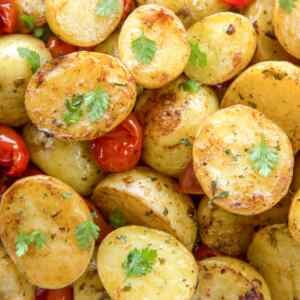Table of Contents
Falafel is a popular Middle Eastern street food and vegetarian dish. It consists of ground bean fritters deep-fried to crispy perfection. Typically made from chickpeas or fava beans or a combination of both, they form small round patties or balls, seasoned with herbs and spices.

They're most famously served tucked into warm pita bread with fresh vegetables and drizzled with tahini sauce or yogurt. The result is one of the world's most beloved sandwiches. Bite into a good falafel and you'll find a crackling crust outside and a tender, moist interior flecked with green herbs.
The flavor is richly savory: earthy from legumes, bright with cilantro or parsley, and aromatic with garlic, onion and spices like cumin and coriander. Falafel has transcended humble origins to become global, enjoyed by vegans, vegetarians and omnivores alike as a tasty, satisfying meal or snack.
A peek into falafel's past
The precise origin of falafel is debated across the Middle East. Many food historians believe it began in Egypt, where it's known as ta'amiya and made from fava beans. It is often associated with Coptic Christians and meat-free eating traditions around Lent, though firm written records are limited.
Early references to falafel appear in the late 19th or early 20th century. The Arabic word “falafel” is the plural form of “filfil,” meaning pepper. By the early 20th century, falafel reached the Levant-Syria, Lebanon, Israel/Palestine and Jordan-where chickpeas replaced fava beans in many versions.
Falafel became popular in cities like Beirut, Damascus and Jerusalem as inexpensive, protein-rich street food. Over time, it gained national symbolism, especially in Israel, though its adoption has sparked cultural and political discussion.
By the mid-20th century, falafel was widespread at Middle Eastern fast food stalls and markets. Immigrant communities brought it to Europe and North America, where it grew popular as a flavorful meatless option. Today it's found in cities worldwide, from Paris to New York to Tokyo, often alongside shawarma and hummus on menus.

How falafel is made
The core ingredients include legumes, for example, chickpeas or fava beans, herbs, spices, and seasonings. Traditional preparations use dried beans soaked in water overnight, then ground into a coarse paste.
For chickpea falafel, soaked beans are mixed with onion, parsley or cilantro, garlic, cumin, coriander, salt and pepper. A small amount of baking soda or baking powder may be added to lighten the texture. The mixture is ground until it holds together without becoming a smooth paste.
Falafel is shaped into patties or balls using hands, spoons, or a mold called an aleb falafel. These are deep-fried in oil until the outside crisps to a golden brown while the inside remains moist.
Chickpea starch acts as a binder without flour or egg. Egyptian ta'amiya often includes chickpea flour or all-purpose flour and extra herbs such as dill, resulting in a bright green interior.
The best falafel are drained and served immediately while still crisp and fresh.
Easy & Fun Falafel Variations to Try
- Classic Chickpea Falafel: Chickpeas mixed with parsley, garlic, cumin and coriander. Fried until golden and fluffy, perfect in pita or salad bowls.
- Bright Beetroot Falafel: Shredded beets added for a pink twist. Slightly sweet and visually striking in wraps or bowls.
- Rainbow Falafel: Five veggie-based versions, pea, beet, carrot, and more, presented together in a festive platter.
- Baked Falafel with Avocado Dill Cream: A lighter oven-baked version served with creamy avocado dill sauce.
- Air-Fryer Falafel: Crispy and less oily, ideal for easy weeknight dinners.
- Edamame Falafel: A modern variation blending edamame with chickpeas for extra protein.

How falafel fits into culture
The most iconic serving style is three or four falafel balls tucked into pita with tomatoes, cucumbers, pickled turnips and tahini sauce. Hot sauce often adds a kick.
In mezze settings, falafel may be smaller and served alongside dips such as hummus or baba ganoush. For many in the Middle East, it is comfort food tied to childhood and quick lunches. In Israel, it is often called the national snack.
In Lebanon and other Arab countries, falafel also features as a breakfast food. It was embraced by vegetarian and vegan communities as meat-free diets grew in popularity in the 1960s and 1970s.
Falafel is filling, affordable and adaptable. It has fed communities for generations and now appears in college canteens, office cafeterias and late-night food stalls worldwide. Variations such as falafel burgers, falafel salads and even falafel waffles showcase its versatility.
Falafel trivia to enjoy
McDonald's Egypt introduced a “McFalafel” breakfast item in select cities, showing local fast-food innovation.
Falafel can fall apart when made with canned beans if they are too moist. The solution is to use dried soaked beans and drain thoroughly. Drinks of flour or chickpea flour also help bind the mixture.
Each year, food lovers celebrate International Falafel Day on June 12-a global appreciation of this beloved Middle Eastern dish, shared through restaurants, recipes, and social media.
Modern cafes feature colorful falafels, from beetroot pinks to carrot oranges. Some health conscious kitchens bake falafel instead of frying it, though many prefer the deep-fried crunch.
In English, “falafel” works as both singular and plural, while in Arabic the plural is falāfil. This suits how people often enjoy falafel in multiples.
From Cairo to Tel Aviv, from street stalls to cosmopolitan food courts, falafel's appeal continues to cross borders, generations and culinary trends.




























